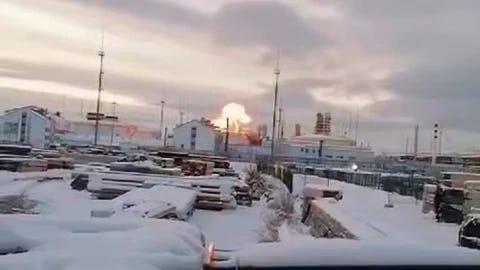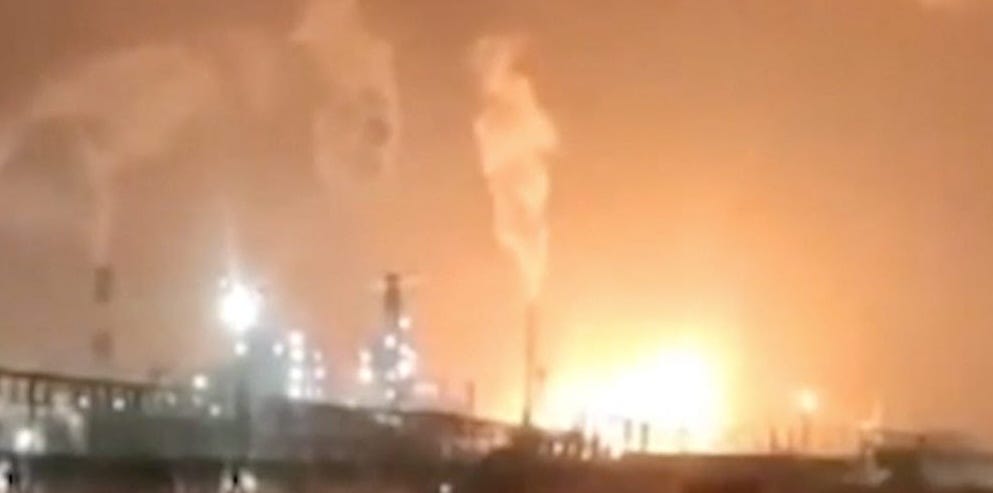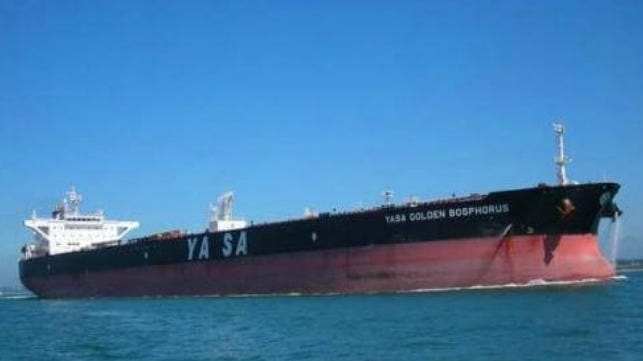Ukraine launched in the past month, but especially in the past two weeks, one of the most intensive onslaughts we’ve seen so far on the Russian Federation’s crown jewel; its once burgeoning oil industry.
The only reason some of them haven’t been hot is because they’re just a bit too far to reach – for now.
The scale of the attacks has been largely responsible for their success. Perhaps the largest operational refinery, because it services Moscow and provides aviation fuel as well has diesel and petrol, has been Ryazan, southeast of Moscow. 121 Drones smashed into the oil refinery on January 24 – clearly a mix of ensuring they hit and overwhelming any defences. The cope cages seem to have been a waste of time as does much of the netting used to try and protect the facility.
However what Ukraine took out of service was a staggering 6% of Russian oil processing capacity for the domestic market – the equivalent of 15 million tons of crude oil per year. That crude is pumped from remote fields in the icy north – and this is mid winter. You stop the flow of oil to a refinery in these temperatures and unless you can divert it out of its pipelines to somewhere else, that’s going to freeze the oil in transit and create mayhem in the pipeline and distribution network. That goes all the way back to the oil field itself, where they may have no choice but to reduce production and perhaps even shut down extraction if it has nowhere to go.
Its the scale of the attacks that is shocking, because it shows a clear decision by Kyiv to tie its drone operations to the new sanctions imposed on Russian tankers, which is preventing the deliveries of crude to major clients like India and China. Those sanctions have already seen both of those countries avoid ordering any shipments for delivery in March, which by now would be ready to leave to arrive in time.
The owners of Ryazan were at one point saying they simply didn’t have the resources to repair the refinery – and if they did the chances are it would be destroyed again.
On January 29 The Kstovo Refinery outside of Nizhny Novgorod was hit. This is deep inside Russia and known for producing fuels for military use.
Another attack on the Lukoil Refinery near Volgograd (the Stalingrad of WW2 fame), resulted in yet more damage to this refinery, which is crucial to supplying fuels and lubricants to the Russian Army.
We have to be clear that Russia has a lot of refineries and they’ve never yet declared a fuel shortage or rationing – authorities go out of their way to ensure that doesn’t happen, because they know from Iran, that if you upset the energy supply people need to keep warm, drive their cars and get about, populations rapidly become restless.
However the cost of maintaining domestic supply and the vast needs of the military have been stretched to breaking point. There’s a noticeable reduction in the use of armor on the front lines – and much of that is credited to the loss of supply tankers – one of Ukraine’s top listed drone attack victims – and the lack of fuel to put in them. It’s also true that the attrition on mechanized forces has all been huge. Combined, its caused the Russians to adopt an ‘all infantry’ posture in attacking.
What seems clear is that Russia has had to adapt and so far it’s managed to just scrape by. However the pressure is getting to the point now where there’s just no room for maneuver.
Oil refineries we have to remember are not needed for crude oil export – however they have seriously curbed Russian export of refined product which is way more profitable than exporting crude oil. Its all forced Russia to export its own crude and re-import it from places like Kazakhstan in refined format – making the Kazakhs good money, costing Russia more in currency it has little of and further weakening its economic position.
The rate of destruction vastly outweighs the Russians ability to fix it. Let us also not forget you cannot really fix these refineries in deep winter. It simply isn’t viable trying to repair these systems in such cold weather.
Ukraine has also been hitting the Ust-Luga export terminal near St Petersburg, already said to be at barely a quarter of its actual capacity, more damage has been done there to. thus ships LNG condensate.
There’s also a wider domestic impact of these attacks. The people who worked at these sites now don’t have jobs for the foreseeable future. The populations for miles around can see the roaring flames and huge explosions. Telegram is full of Russians moaning about the noise of explosions, the thick choking smoke and worst of all, having no comprehension as to why. Why are these multi-billion dollar refineries being hit so easily? Where are the defenses, the missile batteries, the men in pickups with machine has driving around shooting down drones? Communities have formed groups to spot drones and report them, but nobody then acts to shoot them down.
Local populations are said to be suffering from insomnia, paranoid hyper-vigilance and fear. I have no sympathy, because they have been doing this to Ukrainians for the whole war. This is the war, and its come home to Russia.
It has become such an issue that state TV – and we have to remember that it would not discuss this in the talk shows unless it was permitted to do so – has started to do what Russian state TV does. It carefully asks what are serious and seemingly entirely fair questions. “Why is it happening? Who is responsible for defending these vital national facilities? Why are they not doing so?” At no point do they blame the government – they blame the refinery owners, but quickly segue in to the legalities which are the responsibility of the State Duma. That is now getting to the interesting fact that one of the reasons the ‘private armies’ of oil refinery defense workers have not materialized, is because the government doesn’t want to give the oil companies and the oligarchs groups of armed men that could potentially be used against the state. And for state read Putin. This is a subject on which he is paranoid. Remember the Prighozhin saga, and how little anyone did to stop it as it took place.

So while the media tiptoes around blaming the central government, it discuses where the blame should lie – on the owners and the Duma, while not allowing either to solve the problem because Putin is so paranoid.
As to air defenses and systems? There just aren’t enough to go around anymore. It’s as simple as that. And even if there were so many drones are being used they would be overwhelmed.
The economic pressures are clear and Ukraine is piling them on to Russia like never before. Add this to sanctions and an already dangerously unstable economic picture, it’s become a terrifying balancing act. Ukraine must keep pushing these drone attacks, already they have spread to oil pipelines and pumping stations, gas piping stations and factories. Keep it up and it will have the impact they seek. Remain relentless. Win.
The Analyst
militaryanalyst.bsky.social
Source:
https://themilitaryanalyst.com/2025/02/02/ukraines-oil-war-on-russia/






